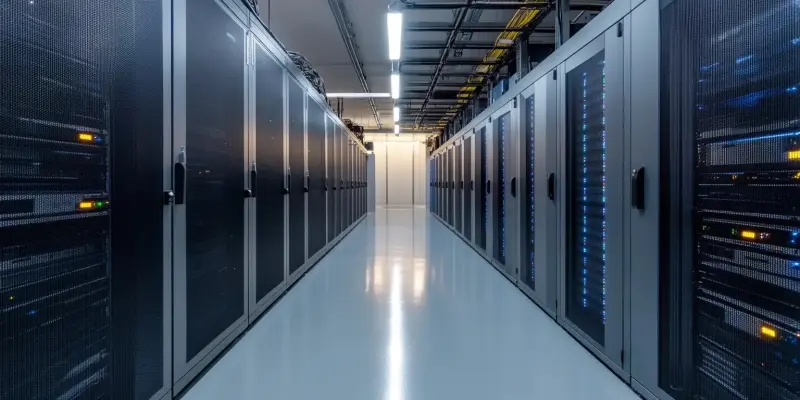Equinix has taken a significant step toward expanding its footprint in Brazil with the inauguration of the RJ3 data center in Sao Joao de Meriti, Rio de Janeiro. Situated in a strategic location, the new facility promises to enhance regional connectivity and build upon Equinix’s commitment to sustainable development. With an investment of $94 million and spanning 1,467 square meters, this state-of-the-art data center houses 560 racks and operates entirely on renewable energy.
Construction Challenges and Methodology
Innovative Techniques and Environmental Concerns
The construction of the RJ3 data center was not without its unique challenges, particularly regarding the steep terrain where the facility is located. To overcome these obstacles, Equinix employed a helicopter to install the necessary power infrastructure, including a high voltage pole, making it infeasible to use traditional crane methods. While this approach facilitated efficient construction and resource optimization, it also raised environmental concerns. Critics pointed out that nearly 50 percent of a data center’s lifetime carbon dioxide emissions originate from the construction and development phases.
Despite the pushback, Equinix defended its construction strategy by emphasizing its focus on minimizing disruptions to the surrounding environment. Utilizing the helicopter not only ensured faster and safer installation but also helped in reducing the impact on local flora and fauna. Moreover, Equinix highlighted its broader sustainability goals, which include conducting Whole Building Life Cycle Analyses to inform the selection of sustainable materials and designs, effectively reducing embodied carbon. The company is also committed to adhering to LEED certification standards to further solidify its eco-friendly initiatives.
Commitment to Sustainable Practices
Equinix’s efforts to integrate sustainable practices into the RJ3 data center’s construction process are indicative of its broader environmental commitments. The company has been proactive in assessing and implementing strategies that reduce the overall carbon footprint of its facilities. By focusing on sustainable materials and energy-efficient designs during the initial phases of development, Equinix aims to lower the environmental impact of its data centers over their operational lifetimes. This holistic approach is not only beneficial for the planet but also aligns with growing global trends toward green technology and responsible business practices.
The company’s dedication to sustainability is further exemplified by its adherence to Leadership in Energy and Environmental Design (LEED) certification standards. These internationally recognized guidelines ensure that buildings are designed and operated with the highest levels of environmental responsibility and resource efficiency. Equinix’s commitment to these standards underscores its resolve to lead by example in the data center industry, demonstrating that large-scale technological infrastructure and environmental stewardship can coexist harmoniously.
Enhancing Connectivity and Strategic Importance
Expanding the Connectivity Portfolio
With the launch of the RJ3 data center, Equinix has significantly bolstered its connectivity offerings in Rio de Janeiro. This new facility joins the ranks of the company’s existing data centers in the region—RJ1 located in Botafogo and RJ2 in Del Castilho. Together, these centers enhance Equinix’s portfolio, providing extensive connectivity options for businesses operating in the region. The interconnected nature of these data centers, including a redundant fiber link between RJ2 and RJ3, enhances network resilience and ensures seamless data transfer, essential for modern businesses reliant on uninterrupted digital services.
Rio de Janeiro holds strategic importance for Equinix due to its role as a landing point for eight submarine cables, which provide RJ3 with direct connections to the United States and Central America. This geographic advantage helps position RJ3 as a critical hub for international data traffic, offering businesses reliable and high-speed connectivity across continents. Furthermore, the presence of RJ3 in Rio complements Equinix’s existing network infrastructure, strengthening the company’s competitive edge in the region.
Competition and Market Outlook
Equinix has made a major advancement in its Brazilian presence by launching the RJ3 data center in Sao Joao de Meriti, Rio de Janeiro. This strategically located facility is set to bolster regional connectivity while reflecting Equinix’s commitment to environmental sustainability. The state-of-the-art data center, established with a hefty investment of $94 million, covers an area of 1,467 square meters and hosts 560 racks. Notably, it operates entirely on renewable energy, showcasing Equinix’s dedication to green initiatives and furthering its sustainability goals. By expanding into this key location, Equinix aims to meet the growing demand for digital infrastructure in Brazil, supporting both local and international businesses in their digital transformation journeys. This new facility is part of Equinix’s broader strategy to strengthen its global network and improve data center services across different markets. With RJ3, Equinix is poised to drive technological growth and provide better, more sustainable solutions to its customers.

